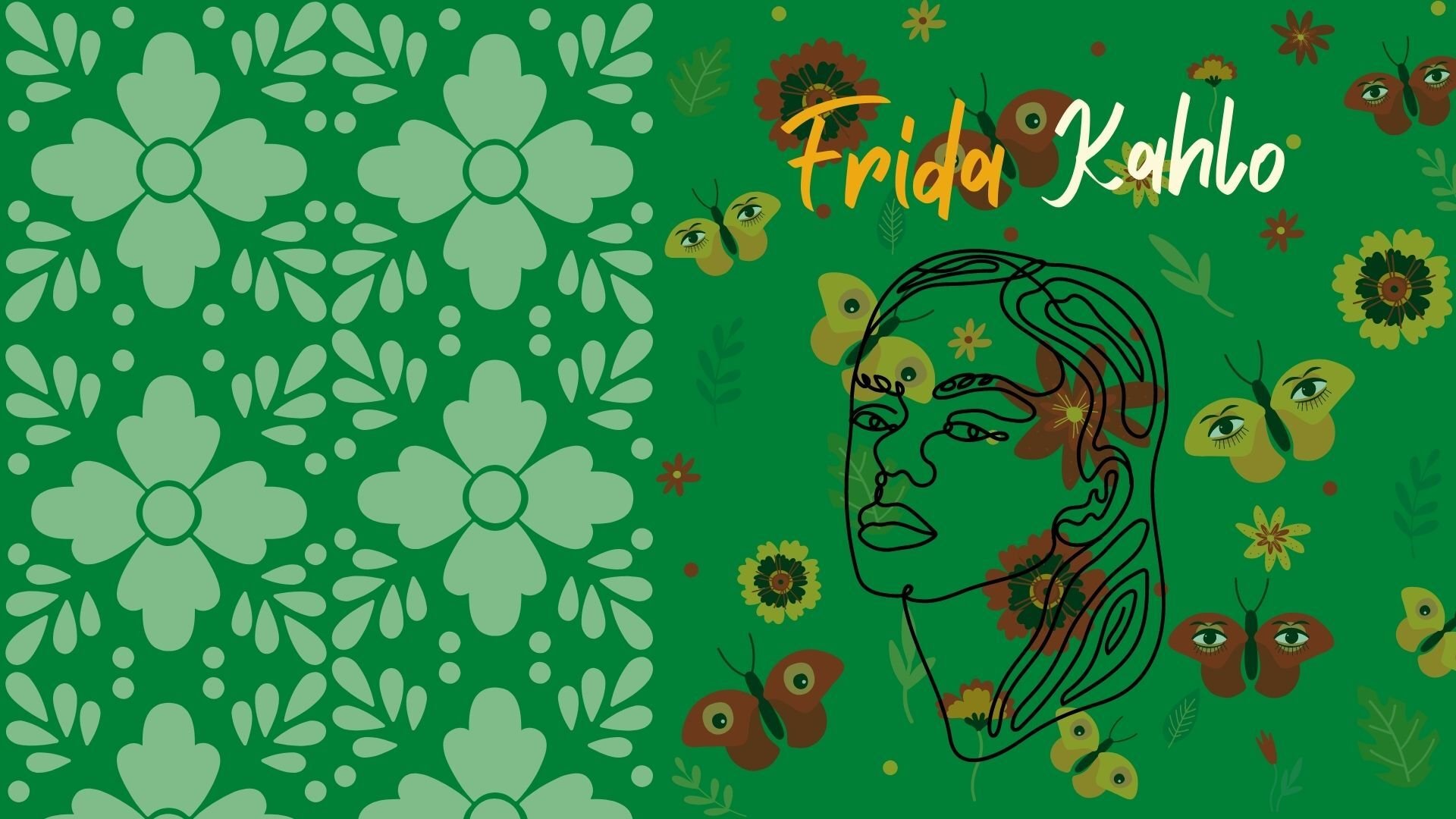Frida Kahlo: Turning Tragedies Into Complicated Beauties
 |
By Valeria Garcia, Arts and Culture Editor, The Real Chi |
|---|---|
“At the end of the day, we can endure much more than we think we can.”
This quote from Frida Kahlo has always inspired strength in me.
I’ve always taken an interest in Frida Kahlo, both as a woman and as an artist. When I was younger she was the first representation I’ve seen from my heritage. When I first learned about Kahlo it became a bittersweet moment in my life. In elementary school, I was one of the few Mexican little girls, therefore, I would have different beauty qualities than my classmates. As a little girl this would affect the way I would look into and identify myself because I would compare myself to them. They didn’t have thick brown hair, big brown eyes, hair on their arms, or even hair in between their eyebrows. Therefore, I would often get picked on for one of these physical appearances solely because I looked different than what they were used to being represented to them.
My mother was the one who introduced me to Frida Kahlo and even then I felt this as my first woman bond. It was the first time I saw someone that looked like me and was embracing it so proudly. My mother and I bonded over Kahlo’s strength and representation as a woman.
I’ve always been interested in the creativity of Frida Kahlo. It could be because of her usage of symbolism, or incorporating pieces of Mexico and its culture in her art works. What I appreciate the most from is her representation of her emotions. With everything she went through in her life, there was this presence of sorrow for her, but Frida never seemed to have it for herself. If she ever did then it was expressed the best in her art. She took her pain and was able to turn it into a beauty. Instead of having anyone else have any say in her traumas, Kahlo took her control back the best way she knew how, and in the most beautiful and meaningful way.
Magdalena Carmen Frida Kahlo y Calderón, also known as Frida Kahlo, was born on July 6, 1907 in Coyoacán México. Kahlo has long been recognized as an important Mexican artist and icon and continues to be recognized as so.
Throughout her life Kahlo faced many traumas that caused her emotional and physical pain. Being bedridden had become a part of Kahlo’s life longer than anyone could handle. When she was only six-years-old she contracted polio and was bedridden. The disease had damaged her right leg and foot, therefore during this recovery process Kahlo developed a limp when she walked. In 1922, when she was 18 years old, Kahlo was involved in a trolley car collision on her way home from school. Kahlo was impaled by a steel handrail that punctured her abdomen and uterus. She also suffered fractures in her spine and pelvis. She was once again bedriden for several months with a plaster cast once she returned home, only this time she began her artistic journey into expressing the emotional and physical pain she was enduring. In her artwork, we are able to see the beauty, strength, and passion behind Kahlo.
Self Portrait in a Velvet Dress, 1926, is Frida’s first self portrait and was painted during her recovery process. Kahlo was discovering this creative side of her and took this opportunity to self identify who she is. This was the first self portrait featuring the infamous eyebrows, indicating Kahlo expressing every side of her beauty confidently. There were social and beauty standards placed on women during Kahlo’s time, she stepped out of this and embraced herself.
Kahlo would often refer to herself as the muse to her art work.
“I am my own muse. I am the subject I know the best. The subject I want to better.”
Being her own muse has certainly inspired vibrant and intense personal pieces throughout her career.
Frida Kahlo was never afraid to express her raw emotions on a canvas. In a time where women were marginalized, she took a stance through her art. Emotional expression seemed to have its limits with women, and never tried to be understood. Through her art Kahlo expressed her emotional and physical traumas- offering us such raw centered images of the pain she endured throughout her life.
In the painting, The Broken Column, 1944, Kahlo painted a very raw and bare side of her. In this painting we are able to see how much emotional and physical pain her injuries were causing her. Kahlo not only drew tears along her eyes but illustrated the complexity of her injuries. We are able to see how Kahlo portrays her own body. She only has on a leather and metal back brace on demonstrating having to have either or on during long periods of time in her life. Her chest is split open revealing to us a rod replacing her spine, but even the rod is broken in different places.
During her life Kahlo said she suffered two accidents in her life.
“There have been two great accidents in my life. One was the trolley, and the other was Diego. Diego was by far the worst,.” said Kahlo about her husband of more than two decades, Diego Rivera.
Diego Rivera and Frida Kahlo had first met when she was in preparatory school and he was on assignment painting a mural. The two were then later reintroduced and married despite the many concerns raised by her family and the odd aspects of their relationships such as their age difference and the constant affairs between the marriage, more so on Rivera’s side.
Kahlo found herself not only in love with Rivera, but inspired by him as well. He recognized her art work as special and introduced her further into the depths of the artistic world.
Therefore, his adultery throughout the marriage had a tragic impact on Kahlo, we are able to see the feeling of despair in the paintings she released throughout these times. Although aware of his many affairs, the one that broke her was the affair between Rivera and Kahlo’s sister, the marriage quickly declined and led to their separation. What is interesting to instead highlight in this part of Frida’s life that has also served as a bit of inspiration to my womanhood, was how she rediscovered herself as Frida.
Kahlo was still part of a very traditional time where certain expectations of women were placed. A dreamy traditional marriage with the hopes of creating a traditional family was never part of Kahlo’s life. In her paintings we see the internal struggle and pain she was experiencing as she would constantly be set up for disappointment because of either Rivera or her previous injuries.
Not only did she have affairs in her marriage, but Kahlo also suffered infertility and miscarried a number of times. She didn’t keep this pain and disappointment in her life hidden, she had lost the hope of a happy marriage along becoming a mother. At some point in Kahlo's life, she was grieving the loss of a baby, a husband, a sister, and herself.
It’s interesting to see the state of Frida through this part of her life through her paintings, there was more said in what she painted than what she could ever report to anyone. If Frida was feeling pin and sorrow, that is exactly what you would see in her paintings. During these traditional times Frida was unable to “complete her life as a woman”, instead of seeing this as a failure, Kahlo saw this as inspiration for her work.
This specific painting from Frida Kahlo has always showcased her strength to me and has inspired me differently throughout my life.
Of course, a painting is up for any form of analytical approach, but this is what I’ve always seen. In this painting we see two versions of Frida sitting and holding hands in unity. Being her own muse is also another way of Frida being aware that only she fully understands what has been through and is the only person who could understand the depths of her emotions. Although she was going through one of the worst times of her life, she reflected. She reflected back to who she was and who she hopes to become in this mix of chaotic change. We see this in this painting with the different, yet identical Frida’s. Her two identities reflect different parts of not only herself, but her life as well. One Frida is in a traditional tehuana white dress symbolizing her earlier life, the purity in the idea of being in love and restricting the rest of yourself and your life to this traditional idea of needing it all. This version of Frida also symbolizes the version Rivera fell in love with. We are able to see Frida’s visibly wounded and empty bleeding heart. She cut the ties between her old self through the main artery, embracing the inner strength she carried with herself throughout all her traumas. In a time where Frida felt as if she lost everyone around her, she turned to herself. It’s interesting to see the Frida she turned to, this Frida is free of wounds, embracing her colorful personality through the clothing she’s wearing. The second Frida is the version of Frida’s true identity. Another similarity between the two Frida’s is the exposure of her heart. We are able to see her strength through this imagery of the hearts. One is wounded and exposed, but the other is this complete and beautiful heart that stayed together despite everything she had been through. Her heart stayed strong enough to fuel and heal her wounds. Wounded, she wasn’t pure, and she wasn’t traditional. She was Frida Kahlo, artist and inspiration.
Frida didn’t stay with the pain, she fueled it into inspiration and created beauty in the chaos.

